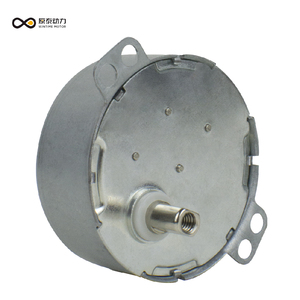Introduction to Reluctance Motor
A reluctance motor is an innovative type of electric motor that operates on the principle of magnetic reluctance. Unlike traditional motors that rely on varying electromagnetic fields, reluctance motors utilize the natural tendencies of magnetic fields to create motion. Ideal for various applications, these motors are renowned for their efficiency, compact size, and simplicity in design. As industries move toward more energy-efficient solutions, the role of reluctance motors is becoming increasingly significant in modern engineering and manufacturing.
Types of Reluctance Motor
Reluctance motors come in different configurations, each designed to suit specific operational needs. The two primary types include:
- Switched Reluctance Motor (SRM): This type of motor is characterized by its simplicity and robust design. SRMs have a rotor made of soft iron and do not contain any windings or permanent magnets. They are well-suited for applications requiring high torque density and speed.
- Synchronous Reluctance Motor (SyRM): This motor operates synchronously with the AC supply. Unlike SRMs, SyRMs can achieve higher efficiency and have better performance characteristics due to their rotor composition, which may include non-magnetic components.
Applications of Reluctance Motor
The versatility of reluctance motors allows them to thrive across numerous industries and applications:
- Electric Vehicles: With the increasing demand for energy-efficient driving solutions, reluctance motors are gaining traction in the electric vehicle sector, providing high efficiency and compact designs.
- Industrial Automation: In factory settings, reluctance motors serve critical roles in automation systems, where precision and reliability are paramount.
- Pumps and Compressors: Their efficiency and sustainability make reluctance motors ideal for hydraulic pumps and air compressors, which require continuous operation.
- Consumer Appliances: Many household appliances, such as washing machines and HVAC systems, utilize reluctance motors for their quiet operation and reliability.
Features and Advantages of Reluctance Motors
Reluctance motors bring a host of features and advantages that make them attractive for many applications:
- Energy Efficiency: These motors provide high performance with low energy consumption, making them a cost-effective choice across various applications.
- Robust Construction: The absence of brushes and windings contributes to a longer lifespan and reduced maintenance requirements.
- Compact Design: Their simple construction allows for compact sizes, facilitating easier integration into restricted spaces.
- Environmental Impact: As they are highly efficient, reluctance motors contribute to reduced energy consumption, making them a greener alternative to traditional motors.
How to Choose the Right Reluctance Motor
Selecting the right reluctance motor involves considering several key factors:
- Application Requirements: Determine the specific needs of your application, such as speed, torque, and duty cycle.
- Environmental Conditions: Assess whether the motor will be exposed to extreme temperatures, moisture, or dust.
- Size Constraints: Ensure that the motor’s size fits within the spatial limitations of your setup.
- Control Method: Consider how the motor will be controlled, as switching methods can vary based on the motor type.










































































































































































































